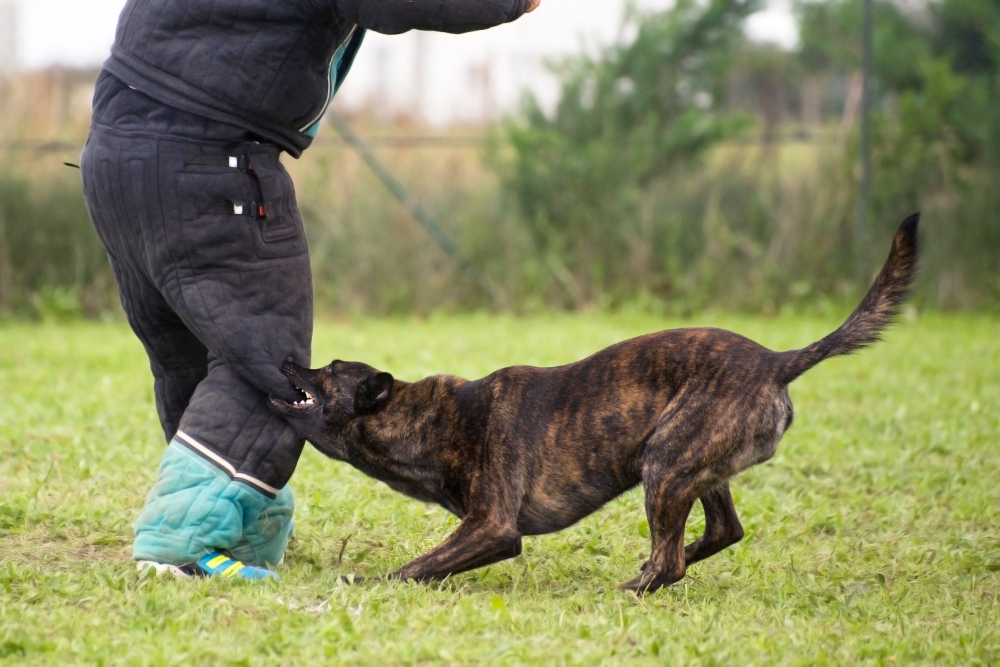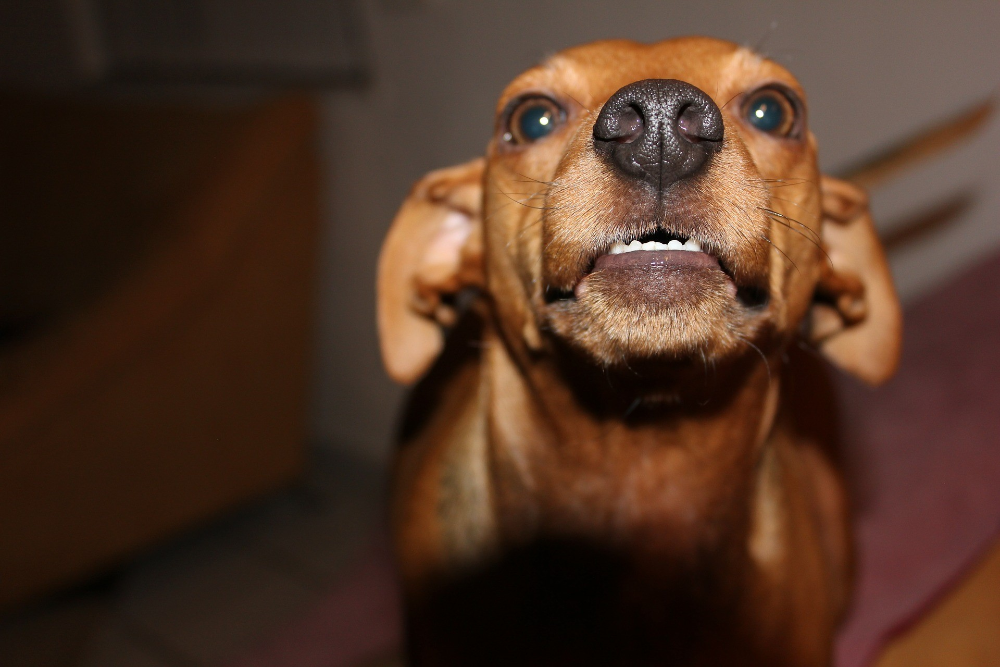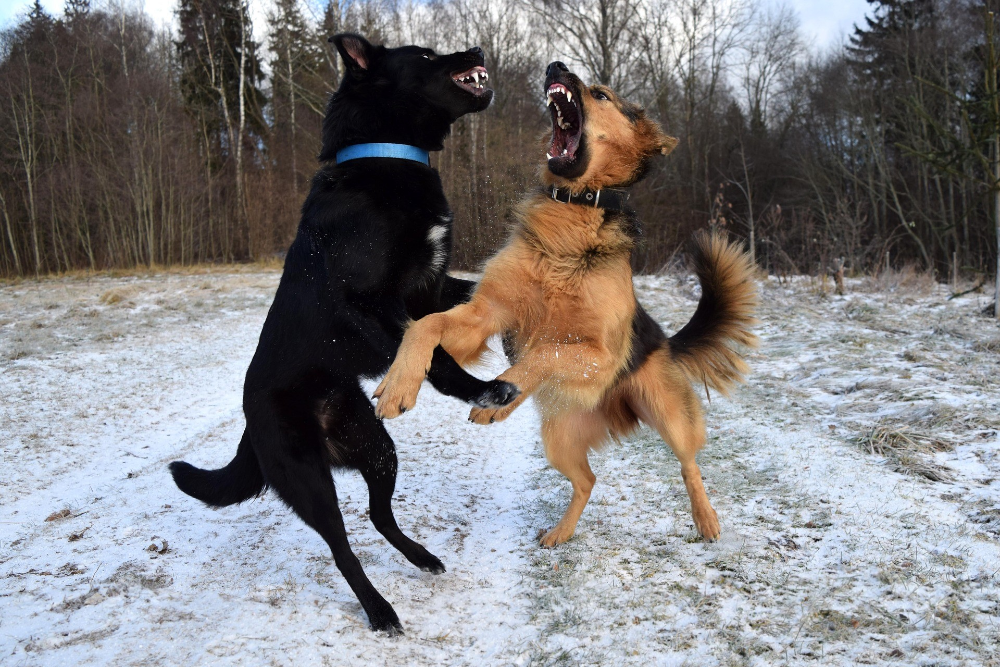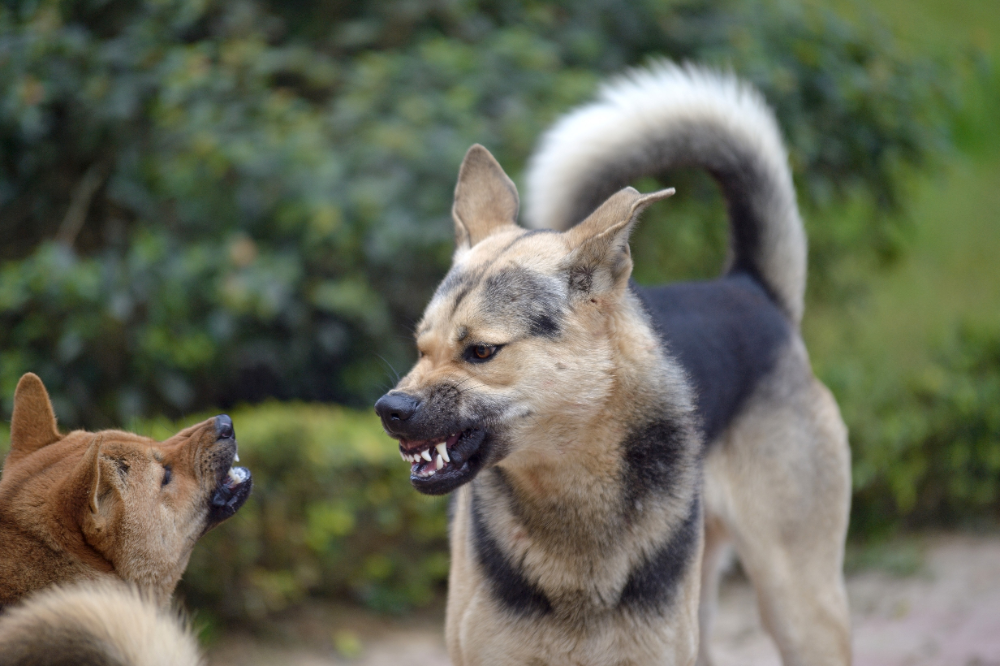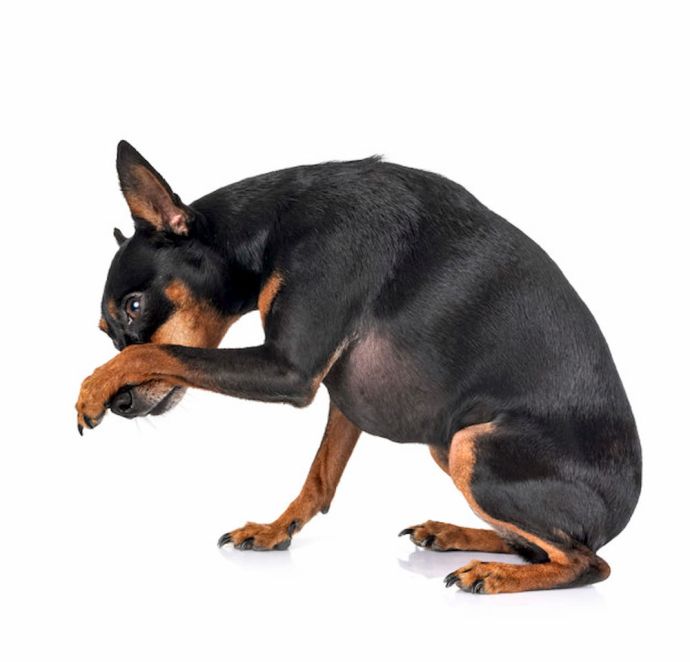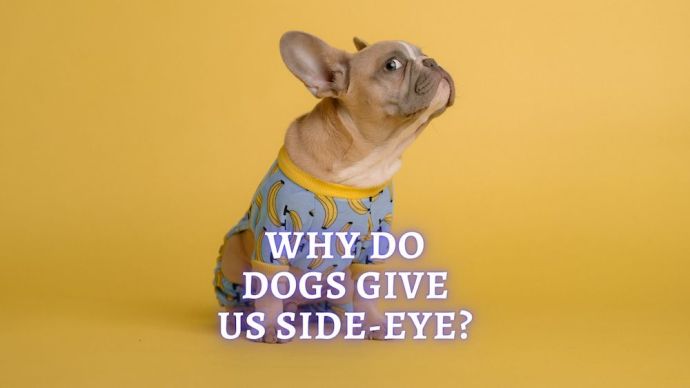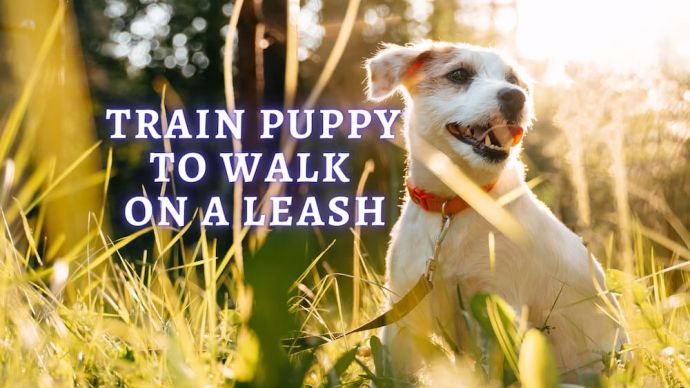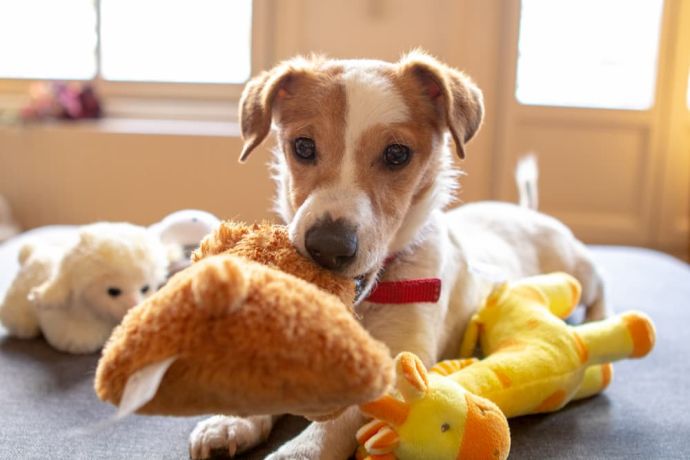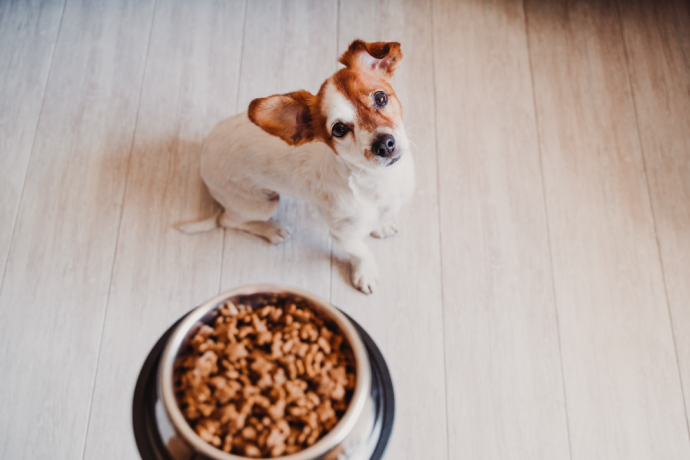How to Deal with Aggressive Dogs the Right Way: Signs and Prevention
Written by:
Author: Vicki Smirnova
Vicki Smirnova is a professional writer and editor who adores animals and helps readers get along well with their pets. She has been working in digital media for more than 5 years and has great experience writing content about lifestyle, including pets. Vicki specializes in dog health and nutrition, cat feeding, dog training. She is an aquarium lover and is passionate to write about fish care at home. Also, Vicki headed several websites and worked as a news editor.
View all 245 articlesLearn about our editorial process and veterinary review board.
Viewed: 495
Updated on: 06/29/2021
An aggressive dog is one that regularly threatens to attack through growling, snarling, or biting. Fear, frustration, and many other reasons can trigger aggressive behavior. Fortunately, there are ways to recognize, approach, and rehabilitate hostile pets. Our complete guide on dealing with an aggressive dog will teach you how to keep yourself and your four-legged friend calm.
Why Does a Dog Become Aggressive?
Before approaching an aggressive dog, you have to understand the cause of the animal’s behavior problem. Typical reasons for such behavior include:
- Defense – Dogs can become aggressive if they feel threatened or in danger.
- Fear – Fear can evoke a fight or flight response in family friends. Dogs may become aggressive if they feel scared or trapped.
- Frustration – Built-up energy and restrictions from a leash, cage, or yard can cause failure in dogs. Aggression occurs when the dog has no outlet or release for this frustration
- Mating instincts – Unspayed and unneutered dogs can display aggression when competing for a mate.
- Medical problems – Illness, such as vision or hearing loss, can cause an attack.
- Pain – An injury or other pain can cause aggression in family friends.
- Possession – This type of assault occurs when a dog is protecting its food, toys, or other objects.
- Predatory – The instinctive behavior to hunt becomes problematic when it’s directed towards humans or other animals.
- Protection – Dogs are protective of their human and canine packs. If a dog feels like its family is under threat, it can act out aggressively.
- Redirected – This kind of hostility can occur, for example, when a person comes in between a dog and its original source of aggression.
- Social – Aggression can occur in family friends that lack social exposure and conditioning.
- Territory – A pet may show aggression when protecting its home and revere.
Not all aggression is necessarily directed towards people. Sometimes, dogs display aggression toward specific animals or objects. Negative experiences can also trigger aggressive behavior. For example, a family friend that learns to fear the vacuum cleaner as a puppy may become aggressive towards it as an adult.
Signs of Aggression in Dogs
Whether you’re a family friend owner or encountering an unfamiliar family friend for the first time, there are ways to recognize signs of dog aggression. Dogs often behave in the following ways when they experience fear, anxiety, or hostility.
- Cowering
- Growling
- Raised fur
- Snapping or biting
- Snarling or exposing teeth
- A stiff body
- Tucking in the tail
An attack can occur when a family friend’s fear or anxiety escalates. However, owners can correct this behavior with confidence-building exercises, training, and patience.
How to Approach Unfamiliar Dogs
You can avoid triggering a bite or attack when you meet an unfamiliar pet for the first time. Follow these steps to ensure a positive interaction with a new pup.
- Ask the owner first – Always get permission from the family friend’s handler before approaching an unfamiliar pet.
- Introduce yourself – Allow the dog to smell your hand by slowly extending it palm down and with closed fingers.
- Wait for signs – A friendly dog will come closer to you, wag its tail, and perk up its ears. However, a pet that lowers its head, flattens its ears, or growls doesn’t want to be touched.
- How to pet – If the dog allows, begin stroking the top of the head and back. Don’t go straight for sensitive areas like the paws, tail, or belly.
By learning to read a pet’s body language, you can recognize when it’s safe to approach the animal.
How NOT to Approach Unfamiliar Dogs
There are also specific ways you shouldn’t approach an unfamiliar family friend. Follow these tips to avoid triggering an aggressive reaction.
- Never run towards a strange dog.
- Don’t kneel to the eye level of the pet and smile. Dogs show their teeth as a sign of aggression and could mistake your smile as an invitation to fight.
- Avoid surprising an unfamiliar family friend. A startled animal can become defensive.
- Don’t pull on tails, ears, or paws. Although some pets enjoy having their bellies rubbed, others may not enjoy touch in certain areas.
- Always listen to warnings. If a pet begins to growl or show signs of aggression, stop petting immediately.
- Never punish a pet for aggressive behavior by yelling or hitting them, since this can only worsen the situation.
How to Prevent Aggression in Dogs
There are several steps pet owner’s can take to ensure their pet never becomes aggressive. Following these tips can help your puppy grow up to be a calm, submissive, and obedient pet.
The First Steps to Take
The following steps can help prevent aggression in dogs during puppyhood.
- Spay or neuter your pet – Unspayed and unneutered family friends are more likely to display protective and territorial aggression.
- Begin basic training – Teach your puppy essential commands such as sit, stay, and high-five. Your pet will be easier to handle if it responds to specific cues.
- Adjust your behavior – Staying relaxed and calm, particularly in stressful situations, is an essential technique.
How to Handle “Potentially Aggressive” Breeds
Develop Social Confidence
Also, as mentioned on acmecanine.com there are a lot of causes of aggression in dogs. But one of the most common reasons for a dog-on-dog attack is a lack of social experience as a puppy. Puppyhood is a critical time for dogs to learn essential communication and social skills that enable the growth of social confidence. Offer your puppy social interaction early on, and avoid the development of anti-social behavior or aggression later in life.
Avoid Punishments
Punishing a family friend by yelling, hitting, or taking away food will not make your pet less aggressive. Although forceful methods can interrupt an undesirable behavior short-term, they won’t change the way your pet reacts to particular situations.
For example, if your dog growls every time another family friend walks past, yelling at him can only worsen the behavior. The dog will begin to associate the presence of another pet with getting yelled at, which can make your pet more aggressive.
READ MORE: Best Senior Dog Food Brands
How to Handle an Aggressive Dog
Owners of aggressive dogs can start to change their pet’s behavior through a combination of rigorous training and positive reinforcement. The following course of action will help you gain control of your aggressive pet.
Start a Training Program
Develop a training plan that addresses your pet’s specific aggressive tendencies. A trainer can help you identify the most effective approach. There are four essential elements that your family friend’s training program should include.
- Counter-conditioning – Associate the desired behavior with a positive experience.
- Desensitizing – Keep exposure to the stimulus minimal in the beginning. Then, increase tolerance slowly.
- Positive reinforcement – Reward any steps taken towards the desired behavior.
- Behavioral incompatibility – Train your pet to respond on-cue to actions incompatible with aggression.
Avoid forms of training that are unpleasant or involve punishment. Instead, use obedience training that rewards and reinforces good behavior.
Obedience Classes and Socializing Techniques
Growly pet classes are special training groups for aggressive dogs. These courses teach dogs to follow their owners, walk on the leash, and avoid conflicts with other family friends. Owners learn how to read their pet’s body language, stay calm in stressful situations, and defuse tension.
Additionally, you can practice socialization exercises with your dog that address your pet’s unique aggression triggers. For example, if your pet typically starts to bark and pull on the leash whenever it sees another dog, you could try the following exercise.
- Find a friend with a pet to help with this exercise. You’ll also need treats.
- Position your dog and yourself in a spot where you can observe your friend appearing and disappearing from your sight.
- Have your friend and his family friend walk across your line of vision and then leave again. When your dog begins to get excited, start offering treats in a calming voice.
- As soon as your friend is out of sight, put away the snacks. Teach your pet that snacks are only available when another family friend passes.
- This exercise will require patience, and you may have to repeat dozens of times before your family friend pays attention to the treats. Have faith that your pet will eventually calm down and show interest in the food.
- Repeat the exercise several times per week until the desired behavior becomes second nature. Finally, your dog will associate the appearance of other dogs with the act of calmly receiving a treat.
You can use similar techniques to replace other aggressive behaviors with more favorable ones.
Correct Dog Owner Behavior
A human’s behavior and body language can also contribute to aggressive behavior in dogs. One of the best things a pet owner can do is stay calm and contained at all times, even when a family friend becomes excited. Dogs can feel your negative emotions and respond accordingly.
For example, responding to your dog’s barking by tightening your hold on the leash will only reinforce the aggressive behavior. Correctly responding to your family friend’s aggression requires a more patient approach. Effective intervention methods can include interrupting eye contact, offering delicious distractions, giving gentle cues, or creating physical barricades.
How to Rehabilitate an Aggressive Dog
The first step to rehabilitating an aggressive pet is understanding what triggers your pet to become aggressive. Hostility may be directed toward other dogs, people, or even objects. Once you know what triggers your dog’s aggression, you can begin to heal the trauma and establish new behaviors.
How to Prevent Aggression in Dogs
- Exercise – Aggressive dogs often benefit from rigorous exercise regimes. Your family friend needs daily walks. How far and how long to walk depends on the individual pet. However, most pet owners find that they tire out long before their canine companions!
- Socialization – Dogs learn to socialize as puppies and benefit from interaction with other dogs at a young age. Set up a play date or visit the local family friend park so your pet can learn social skills.
- Training – Teach your dog to respond to necessary skills on command, such as sitting and lying down. Dogs with a history of past trauma can benefit from behavioral classes. Here, your pet can learn new ways to handle stressful situations.
How to Calm an Aggressive Dog
- Stay calm – Getting excited or loud when your family friend becomes aggressive will only make the situation worse. Dogs are sensitive to human emotions and react more positively to a calm and decisive leader.
- Use a muzzle during walks – A caged muzzle will prevent an aggressive pet from biting others.
- Understand your dog’s triggers – Pay attention to what evokes an aggressive reaction from your pet. Knowing what triggers the hostility can help you avoid it.
- Enroll in obedience class – Professional help can teach you effective new ways of handling and controlling your pet’s aggression.
Pay attention to your family friend’s body language and react to agitation signs as soon as you notice them. If your pet becomes aggressive in specific circumstances, you need to slow down and defuse the situation.
How to Handle a Neighbor’s Aggressive Dog
If your neighbor has an aggressive pet, you can take steps to keep yourself and your family safe. If your neighbor’s dog threatens to attack you, remember the following.
- Stay calm – Shouting, running, or making other sudden movements could provoke an attack.
- Remain still – Don’t turn your back to the family friend and walk away. Back away slowly.
- Don’t make eye contact – An aggressive pet could interpret your gaze as a challenge to fight.
- Avoid smiling – Dogs bare their teeth as a sign of aggression.
If the family friend tries to bite you, stay as calm as possible, and avoid adding excitement to the situation. Avoid hitting the animal. Instead, try to put an object between the pet and yourself.
What to do if a Dog Bites You
Unfortunately, some situations are unavoidable. After a family friend bite, the best way to handle the event is by following the steps below.
- Assess the severity of your injury – Did the bite break the skin? Are you bleeding? Do you feel pain? If the damage is severe, you should call 911 or visit the hospital immediately.
- Speak to the owner – Verify that the pet is vaccinated against rabies.
- Clean the wound – Animal bites can lead to other types of infection. If possible, clean the wound with water and soapy water. If the injury is too severe, wait for medical assistance.
Always take precautions with an aggressive animal, and don’t provoke an adverse reaction.
Final Thoughts
Aggression in pets is typically a response to a perceived threat. Growling, cowering, and lowering the ears and tail can be signs of building tension in pets. When a dog feels overwhelmed by a trigger, the fight or flight response takes over.
Fortunately, you can prevent and treat aggressive behavior in dogs. Adequate socialization during the early years of a dog’s life is one of the best ways to prevent aggressive outbursts. Additionally, the family friend owner’s behavior can play a significant role in the development of unfavorable traits.
 Dog Training How To Bond With Your Dog: Ways To Improve The Relationship With A Dog
Dog Training How To Bond With Your Dog: Ways To Improve The Relationship With A Dog - 94
- 0
 Dog Veterinary Tips Why is my Dog throwing up: Causes and Preventing (Veterinary Advice)
Dog Veterinary Tips Why is my Dog throwing up: Causes and Preventing (Veterinary Advice) - 21802
- 5
 Dog Care My Dog Keeps Scratching His Mouth: Reasons Why Your Dog Scratching Face
Dog Care My Dog Keeps Scratching His Mouth: Reasons Why Your Dog Scratching Face - 17170
- 1
 Dog Care Why Is My Dog Bleeding From Its Butt? Causes and treatment of rectal bleeding in the dog
Dog Care Why Is My Dog Bleeding From Its Butt? Causes and treatment of rectal bleeding in the dog - 15127
- 0









